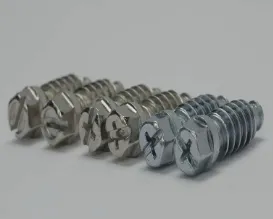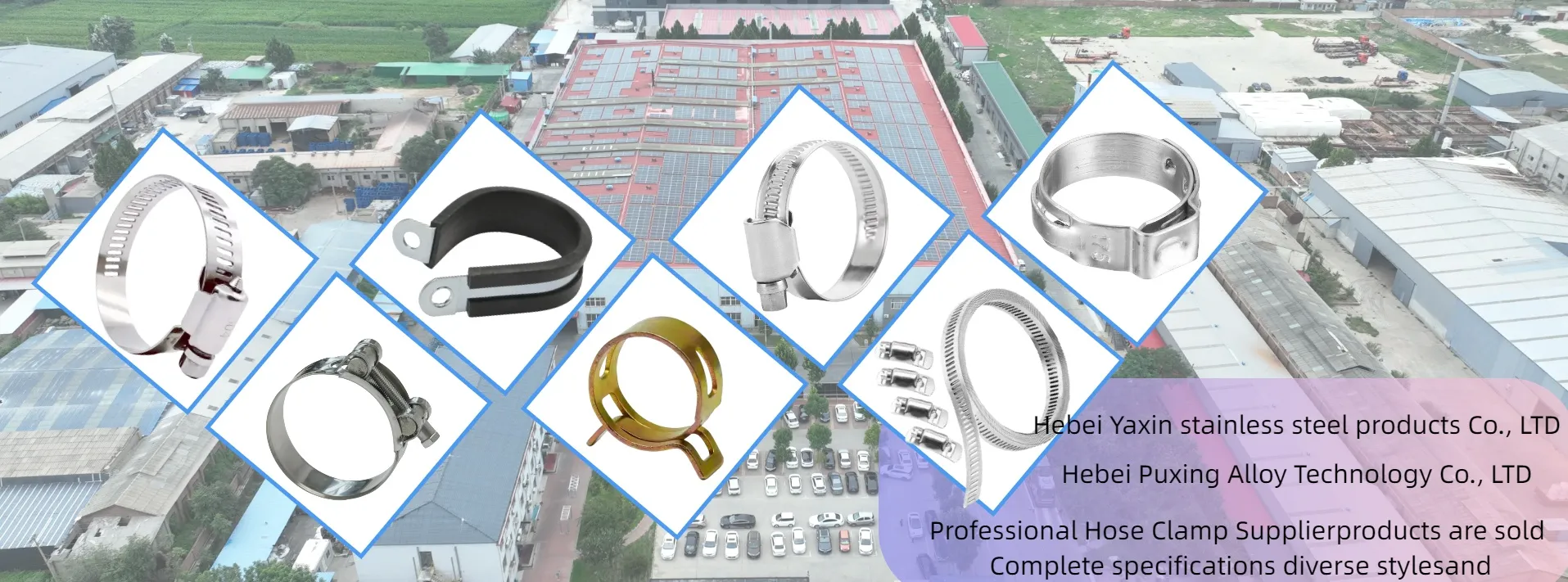- Phone:+86-17331948172 +86-0319-8862898
- E-mail: inquiry@puxingclamp.com
Jul . 24, 2025 15:43 Back to list
Tightening Hose Clamp Screws
Proper tightening of hose clamp with screw fasteners is critical for creating leak-proof seals while preventing damage to hoses and fittings. The process requires understanding of torque values, screw types, and proper techniques to ensure optimal performance. Whether working with standard hose clamp with thumb screw designs or heavy-duty screw down hose clamp configurations, following correct procedures can mean the difference between a reliable connection and system failure.

Modern hose clamp with screw products utilize various stainless steel alloys (201, 304, 316) that offer different strength and corrosion resistance properties. The screw's head design - particularly in hose clamp with thumb screw models - significantly impacts both installation convenience and final clamping force. For industrial applications, screw down hose clamp variants provide superior holding power but require specialized tightening approaches.
This comprehensive article covers professional techniques for all major hose clamp screw types, torque specifications for different applications, and solutions to common tightening challenges. By understanding these principles, technicians can achieve perfect seals while extending the service life of both clamps and hoses.
Proper Tightening Techniques for Hose Clamp with Screw
Standard hose clamp with screw designs require precise tightening methods to achieve uniform pressure distribution:
Preparation Steps
Select the correct screwdriver bit that fully engages the screw head
Clean screw threads and band grooves of debris
Position clamp 1/8" from hose end for barbed fittings
Center clamp evenly around the connection point
Tightening Process
Begin with hand-tightening until resistance is felt
Use calibrated screwdriver for final tightening
Apply torque in 1/4 turn increments
Alternate between opposite sides on dual-screw clamps
Our premium hose clamp with screw products feature laser-etched torque indicators that change color when optimal tightness is achieved.
Special Considerations for Hose Clamp with Thumb Screw
Hose clamp with thumb screw designs offer convenient hand-tightening but present unique challenges:
Advantages
Tool-less adjustment in tight spaces
Quick release for maintenance
Visual tightness indication
Tightening Limitations
Maximum hand torque typically 8-10 in-lbs
Not suitable for high-pressure applications
Requires more frequent re-tightening
Enhanced Techniques
Final tightening with pliers (add 1/4 turn past hand-tight)
Use of thumb screw extenders for better leverage
Application of thread-locking compounds
Installation of secondary safety clips
Maintenance Schedule
Weekly torque checks for critical systems
Monthly inspections for general applications
Immediate replacement if threads are stripped
Our industrial-grade hose clamp with thumb screw models incorporate:
Knurled heads for better grip
Locking thread designs
Torque-limiting collars
316 stainless steel construction
Heavy-Duty Applications with Screw Down Hose Clamp
Screw down hose clamp configurations demand professional tightening approaches:
Installation Protocol
Pre-tighten all screws to 50% final torque
Follow star pattern on multi-screw clamps
Final tighten in three progressive stages
Verify uniform gap around entire clamp
Special Tools Required
Dial torque wrench
Gap measurement feeler gauges
Parallel pliers for band alignment
Digital torque analyzer
Our screw down hose clamp series features:
Forged screw heads
Precision ground washers
Lubricated threads
Torque verification marks
Preventing Common screw down hose clamp Mistakes
Avoid these frequent errors when working with hose clamp screws:
Over-Tightening Consequences
Hose material extrusion
Thread stripping
Band deformation
Premature fatigue failure
Under-Tightening Issues
Fluid leakage
Hose slippage
Vibration damage
System contamination
Proper Correction Methods
Use torque-limiting drivers
Follow manufacturer specs
Implement torque audit systems
Train technicians regularly
Our hose clamp with screw products incorporate:
Visual overtightening indicators
Shear-off screw heads
Band stress relief features
Tamper-evident designs
FAQs About Tightening Hose Clamp With Screws
What's the best tool for tightening a hose clamp with thumb screw?
For hose clamp with thumb screw models, we recommend:
- handle torque screwdrivers
- Adjustable thumb screw drivers
Precision slip-joint pliers
Never use power tools
How often should screw down hose clamp torque be verified?
Critical system screw down hose clamp installations require:
Initial verification after 24 hours
Weekly checks for first month
Monthly inspections thereafter
After any system pressure surge
Can you reuse a hose clamp with screw after overtightening?
Overtightened hose clamp with screw units should be replaced if:
Threads are deformed
Band shows permanent kinks
Screw head is damaged
More than 5% torque loss measured
Why do some hose clamp with thumb screw designs loosen over time?
Common causes of loosening in hose clamp with thumb screw models:
Vibration-induced thread walk
Material relaxation
Thermal cycling
Insufficient initial torque
What's the proper lubrication for screw down hose clamp threads?
For screw down hose clamp assemblies, use:
Nickel anti-seize for high temps
Moly grease for heavy loads
PTFE spray for corrosive environments
Never use petroleum grease on oxygen systems
Mastering the art of tightening hose clamp with screw and screw down hose clamp systems requires understanding both the mechanical principles and practical techniques. Proper procedures extend clamp life, prevent leaks, and maintain system integrity.
Key takeaways include:
Always use calibrated torque tools
Follow manufacturer specifications
Implement regular torque verification
Train personnel on proper techniques
Use quality clamps with visible indicators
Our hose clamp solutions feature:
Precision-engineered screws
Optimized thread designs
Torque indication systems
Corrosion-resistant materials
For specialized applications, consult our engineering team about custom screw down hose clamp configurations designed for your specific torque and performance requirements.




